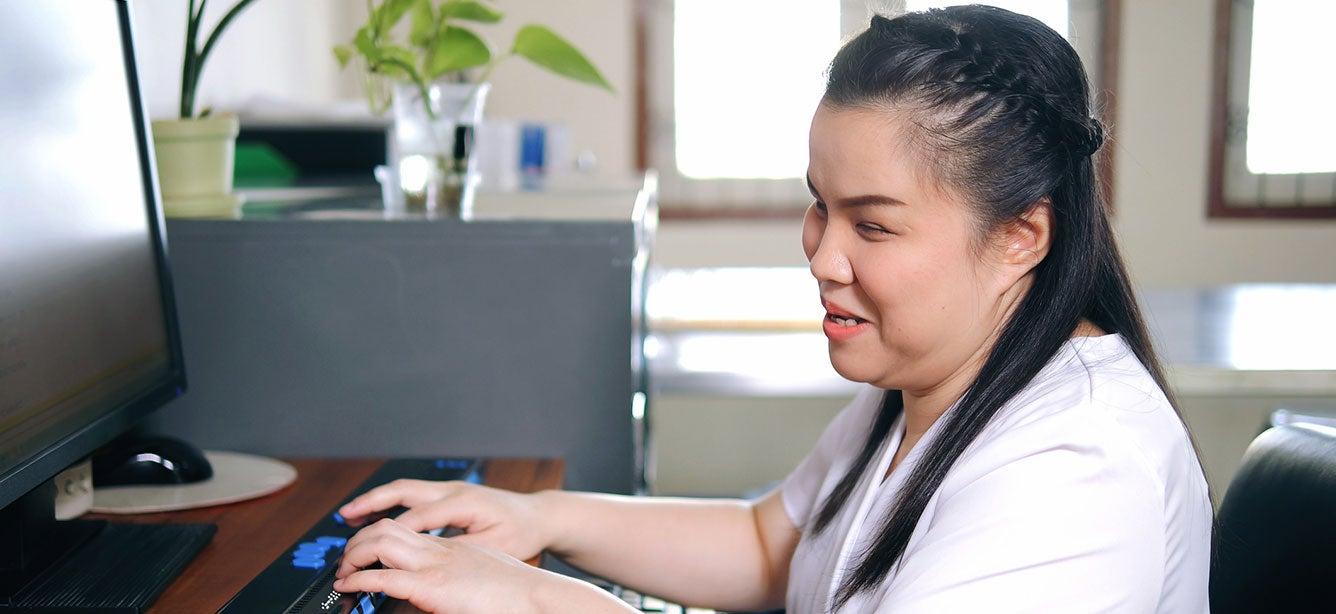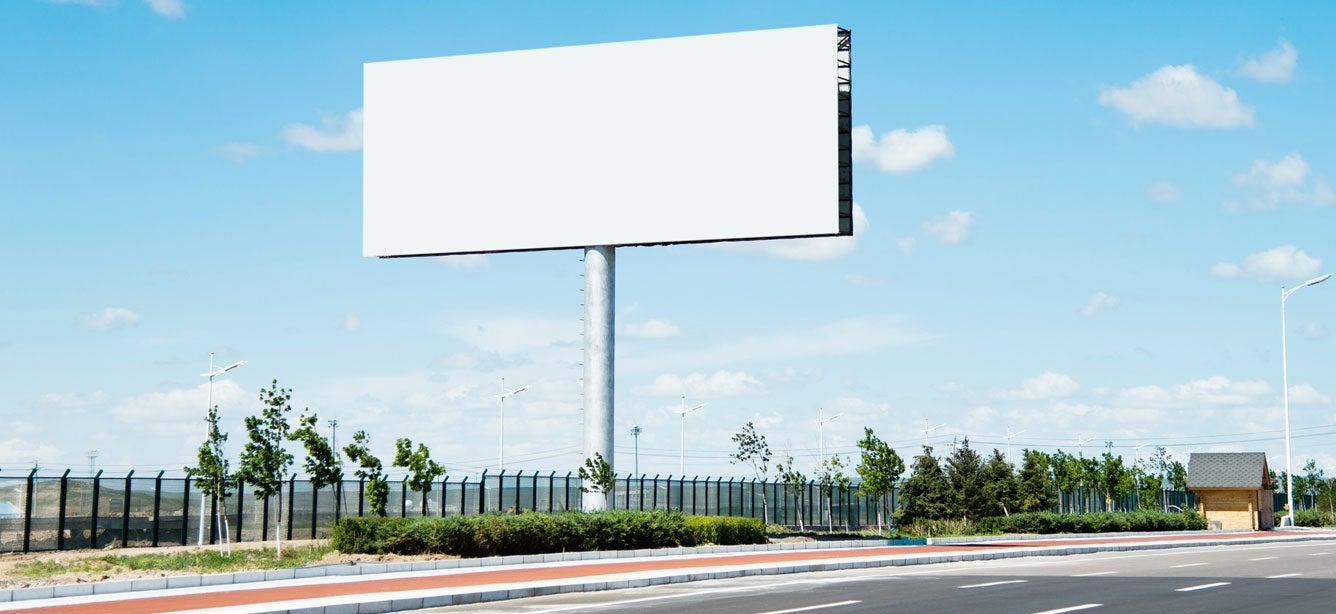Tips for Connecting to Medicare Beneficiaries Who Are Under 65 and Have Disabilities
10 min read

More than 12.5% of Medicare beneficiaries are under the age of 65 and qualify for Medicare because of a disability. Yet communication, technological, physical, and/or attitudinal barriers can reduce access to benefits for people with disabilities.
Since 2008, the Medicare Improvement for Patients and Providers Act (MIPPA) has provided funding to help Medicare beneficiaries with limited income and assets learn about programs that may save them money on their Medicare costs. Below we share a collection of outreach models and strategies MIPPA grantees have used to overcome barriers and improve access to benefits for people with disabilities.
Making the most of partnership opportunities
MIPPA grantees have long recognized that one of the key ways to reach people is to partner with the agencies and organizations that serve them. Grantees routinely turn to aging and disability resource centers, centers for independent living, and organizations within the disability rights network because of the experience, cultural awareness, and trust they have garnered with the under 65 population of Medicare beneficiaries.
- Aging and disability resource centers (ADRCs) serve as single points of entry into the long-term services and supports (LTSS) system for older adults, people with disabilities, caregivers, veterans, and families. Some states refer to ADRCs as “access points” or “no wrong door” systems. Depending on the contractual arrangements within a state, the ADRC network may directly receive MIPPA funding, or the funds may flow through a different agency. According to US Aging’s 2020 National Survey of AAAs nearly two-thirds of established AAAs act as an ADRC within their community.
- Area agencies on aging (AAAs) are public or private non-profit agencies designated by the state to address the needs and concerns of all older persons at the regional and local levels. AAAs may be categorized as: county, multi-county, city, regional planning council or council of governments, private, or non-profit.
- Centers for independent living (CILs) are designed and operated by individuals with disabilities to provide independent living services for their peers. These programs provide tools, resources, and supports for integrating people with disabilities fully into their communities to promote equal opportunities, self-determination, and respect. CILs can be found in every state and territory. To locate the CILs in your state, visit the Independent Living Research Utilization Directory of CILs and Associations.
- State councils on developmental disabilities: Each state and territory has a network of agencies and councils designed to serve and advocate for people with developmental disabilities. The State Councils on Developmental Disabilities work to address identified needs by conducting advocacy, systems change, and capacity building efforts. Each state and territory also has a Protection and Advocacy agency that serves individuals with disabilities. For State Council program contacts, visit the Administration for Community Living.
Partnership outreach efforts are typically centered on developing and expanding the services or resources offered by the collaborating partner to include disseminating information and/or screening of clients for MIPPA benefits eligibility. MIPPA grantees routinely offer partners training and technical assistance on the most up-to-date information on Medicare enrollment and benefits, including the Part D Low Income Subsidy (LIS) and Medicare Savings Programs (MSPs). Grantees also provide education and outreach events to support the partnership.
Some of the most common ways grantees have found to partner with organizations dedicated to working with people with disabilities:
- Meet regularly with the disability partners to learn about their organizational mission, programs, and initiatives.
- Train partner staff on MIPPA benefits.
- Develop memoranda of understanding (MOUs) with partner organizations, which at minimum establish a referral protocol.
- Allow partners to hold a seat on organizational advisory boards and/or steering committees.
- Link to one another’s organizational website and social media platforms.
Examples from MIPPA grantees
Some specific examples of how MIPPA grantees have partnered with the disability network:
- A New Hampshire grantee has launched an effort to train Granite State Independent Living staff to assist the beneficiaries they serve to gather the necessary documentation required when applying for benefits.
- A Missouri grantee reports disseminating information through their No Wrong Door Stakeholders group, which include Aging, Centers for Special Health Care Needs, CIL, Brain/Head Injury and Developmental Disability providers. The grantee has also trained I&R staff and family navigators about Medicare and MIPPA/SHIP. The grantee recommends working with the other “disability, diagnosis specific groups” such as Down Syndrome, Easter Seals, brain injury groups, and the Autism Society.
- A Rhode Island grantee shares that one of the requirements of their ADRC partner is to train staff to pre-screen individuals for benefits at the point of initial contact, with plans to develop additional screening techniques and tools to continue to identify Medicare beneficiaries who may qualify for LIS and MSP programs.
- A Georgia grantee partnered with a vocational rehabilitation agency helps people with disability find employment by screening program participants for eligibility for MIPPA benefits.
Connecting with subsidized housing communities
Recognizing that transportation has traditionally been a barrier to benefits access for people with disabilities (who may require travel to receive in-person application assistance), many grantees have opted to collaborate with the housing communities where people with disabilities live. Some residential outreach strategies:
- Many grantees report scheduling meetings with residential housing coordinators or members of the housing authority following the release of the updated federal poverty limits to update the staff on the income and asset guidelines for LIS/MSP.
- A Kentucky grantee hopes to expand their partnership with integrated care communities to raise awareness about MSPs and SHIP throughout the year and be available to counsel residents on possibly changing Part D plans during Medicare open enrollment.
- A grantee out of Utah and others are promoting MIPPA benefits by creating articles and information snapshots for a newsletter that is distributed to housing residents each month.
Grantees stress the importance of developing a strong relationship with the residential housing coordinators or housing authority members, as they are usually the point of contact for the community and can help communicate the program message to residents. Several states also report that high turnover rates among housing staff can, and often do, result in a reduced level of assistance for residents.
Using technology to reach Medicare beneficiaries under 65
As an increasing number of Medicare beneficiaries are becoming comfortable using online services, more grantees have increased their own technological presence and expertise. Today, most MIPPA grantees are proficient in conducting outreach and education events and meetings via an online platform like Zoom, Facebook Live, and Webex. Additionally, grantees have developed more interactive websites or portals which allow them to respond to online inquiries. Grantees are creating electronic newsletters, educational presentations, streaming outreach events, You Tube videos and more to connect with beneficiaries of all ages.
Recognizing that many Medicare beneficiaries do not have equal access to digital services, many grantees have partnered with their state assistive technology program (SATP), which provide internet services, telecommunication devices, and assistive technology to people with disabilities and those that are 60+ for no or greatly reduced costs.
To clarify, assistive technologies (AT) are devices or equipment that can be used to help a person with a disability fully engage in life activities. ATs can help enhance functional independence and make daily living tasks easier through the use of aids that help a person travel, communicate with others, learn, work, and participate in social and recreational activities. An example of assistive technology can be anything from a low-tech device, like a magnifying glass, to a high-tech device, such as a special computer that talks and helps someone communicate.
The State Grants for Assistive Technology Program makes AT devices and services more available and accessible to individuals with disabilities and their families. The program provides one grant to each state, the District of Columbia, Puerto Rico, and most U.S. territories. Several grantees have partnered with their SATP by creating mutual reciprocal referral protocols. Individuals that receive technical support from SATP are provided information on MIPPA benefits and MIPPA clients are made aware of technical support services available through SATP.
Some examples of how grantees have used technology-based outreach strategies to connect with the disability network:
- A Hawaii grantee is developing a pamphlet that will provide instructions on how to secure internet access and use the internet to apply for MIPPA benefits.
- A Connecticut MIPPA grantee has trained their state’s Digital Divide Coordinators to mention both the CHOICES program (State Health Insurance Assistance Program) and MIPPA benefits during their client training and referral sessions. Bridging the Digital Divide is a federally funded program that provides telecommunication devices (tablets, smartphones) and training to adults with disabilities and people 60+ at no cost.
- A New Hampshire grantee is seeking to engage their state’s Hearing, Speech, and Vision specialist to help the MIPPA staff communicate and connect with beneficiaries who use American Sign Language, and tools such as pocket speakers or whiteboards.
- PA MEDI (SHIP) partnered with the National Federation of the Blind’s free audio news service, NEWSLINE@. The service provides a dedicated channel for audio news for anyone who is blind or print impaired. PA MEDI uploaded SHIP and MIPPA program materials which were disseminated to over 4,000 blind PA residents.
Numerous grantees develop English and Spanish and American Sign Language videos, which are posted on their MIPPA webpage and/or YouTube channels.
Consider ways to improve program accessibility
Connecticut CHOICES and ADRC recently sought guidance from two disability coalition groups on how to increase the level of accessibility of their program materials by people with disabilities. Recommendations made by the coalition groups:
- Provide additional education and outreach on the Senior Medicare Patrol (SMP). People with disabilities are often the target of scams and fraudulent activities.
- Ensure your program materials are accessible to assistive technology tools like screen readers by using publicly available tools to test them.
- Include younger people with disabilities in your outreach efforts. Ensure that pictures of under 65 adults are shown on program materials and advertising. Disseminate program information on social media platforms frequented by younger audiences.
- Translate MIPPA materials into other languages.
- Use more plain language communications. Plain language is a style of communication that prioritizes using easy-to-read, concise, and clear information. Plain language makes information more accessible to most readers including people with cognitive and learning disabilities. Get resources and examples of plain language.
- Consider using a social story to communicate your message. Social stories use words and images to break down tasks or social skills into smaller, easy-to-follow steps. Social stories are short and consist of directive sentences (sentences that tell a person what to do) and descriptive sentences (sentences describing the situation). Here's an example of a COVID-19 social story.
More tips on accessibility
One MIPPA grantee, the University of Missouri Kansas City (UMKC) Institute for Human Development, also operates two resource centers—Missouri Family to Family Health Information Center and University Center on Excellence in Developmental Disabilities—that work to promote self-determined lives for people with disabilities. UMKC offers two tips additional tips for the network:
- Keep an open mind. The developmental disability community, like many communities, does not immediately recognize why they need to think about Medicare enrollment for young people with disabilities. Many people do not understand that individuals with disabilities and developmental disabilities might be “dual eligible” because of a parent’s retirement or other circumstances.
- Recognize that dual eligible status can be helpful in some ways, but it could negatively impact a client’s Medicaid home and community-based waiver services if they are not careful. Stories are an effective way to convey the negative implications of not dealing with insurance/enrollment issues, while also providing examples of how to get help.
Many thanks to the grantees who shared their strategies to connect with Medicare beneficiaries under 65.



